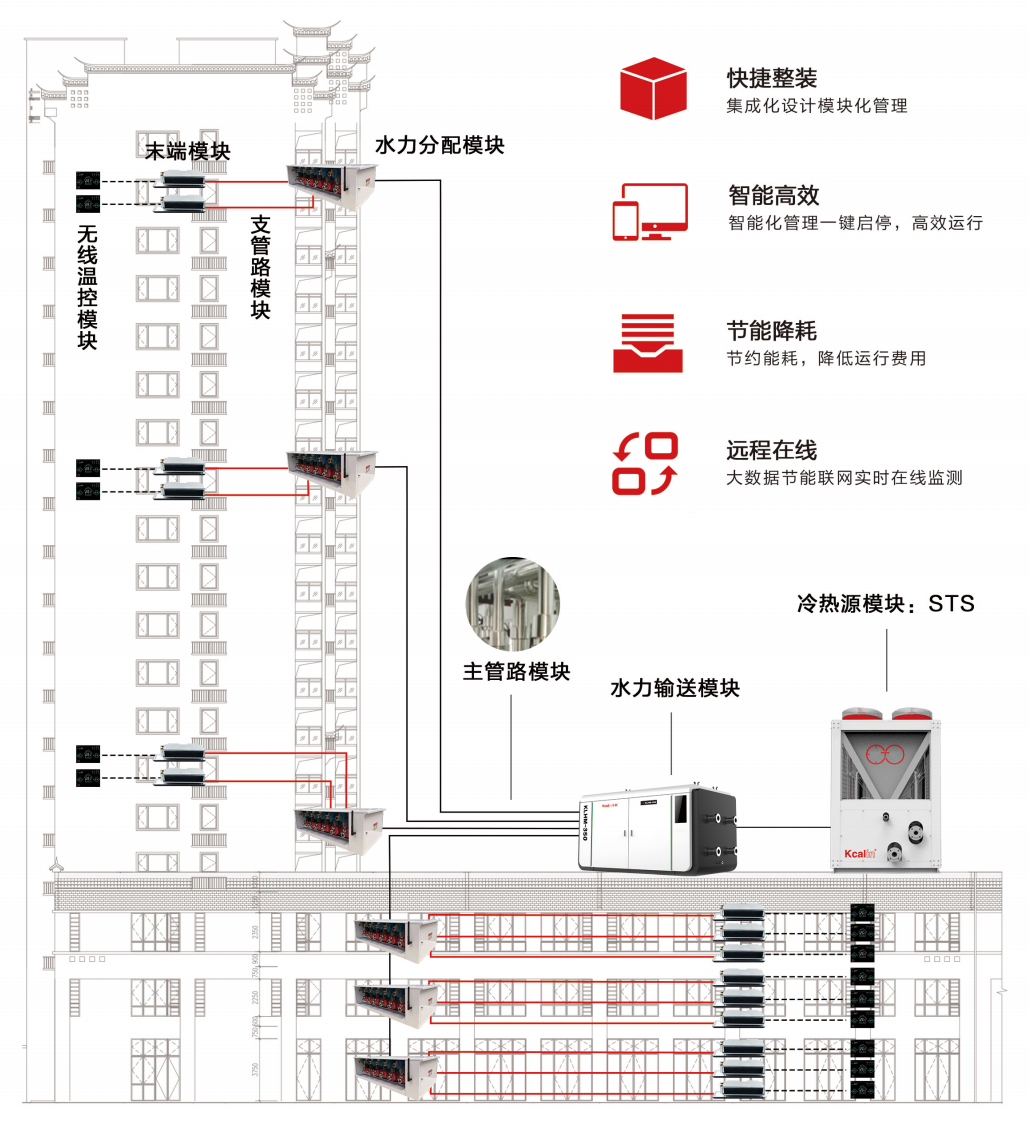Ventilation systems play a crucial role in various applications, whether in buildings, industrial plants, mines, or other fields. The ventilation system is not only a means of providing fresh air, but also interconnected with multiple other systems to ensure the quality, safety, and efficiency of the indoor environment.
There is a close correlation between the ventilation system and the air conditioning system. They are usually interconnected in the following aspects:
Air quality: The ventilation system is responsible for providing fresh air, while the air conditioning system controls the indoor temperature. These two systems together ensure indoor air quality.
Energy efficiency: Ventilation systems can be used to pre cool or heat the external air entering the building, thereby reducing the burden on the air conditioning system and improving energy efficiency.
Humidity control: Ventilation systems can help control indoor humidity, while air conditioning systems typically also have dehumidification functions.
Indoor air circulation: The ventilation and air conditioning systems work together to ensure uniform distribution of air throughout the building and provide a comfortable environment.
The relationship between ventilation and heating systems is also close, especially in cold weather conditions:

Air preheating: The ventilation system can preheat the external air before entering the building, thereby reducing the burden on the heating system and improving energy efficiency.
Hot air distribution: Heating systems typically use ventilation systems to distribute heated air to various rooms to ensure uniform heating.
Chimney and ventilation: Heating systems typically require chimneys or exhaust systems, which together with ventilation systems ensure the emission and safety of combustion gases.
There is a correlation between ventilation systems and fire protection systems, which is crucial for the safety of buildings:
Smoke Removal: The ventilation system can be used to eliminate harmful smoke generated in fires and ensure the cleanliness of evacuation routes.
Fire door control: The ventilation system can work in collaboration with the fire door control system to ensure the correct closing of the fire door in case of a fire.
Smoke detection: The ventilation system can be connected to the smoke detection system to take appropriate ventilation measures when a fire alarm is triggered.
In industrial environments, the relationship between ventilation systems and production systems is crucial for ensuring work environment safety and production efficiency:
Harmful gas emissions: Ventilation systems are used to discharge harmful gases generated in industrial processes, protecting workers from the hazards of harmful gases.
Temperature control: The ventilation system can be used to adjust the temperature of the working area, ensuring that production equipment operates under suitable temperature conditions.
Dust control: During the manufacturing process, the ventilation system is used to control the dispersion of dust and particulate matter, in order to maintain air quality and the operation of production equipment.
The ventilation system is not just a way to provide fresh air, it is interconnected with multiple other systems to ensure the quality, safety, and efficiency of the indoor environment. The design and operation of ventilation systems need to comprehensively consider the relationship with air conditioning, heating, fire prevention, and industrial production systems to meet the needs of various application fields. The synergy between these systems helps to create a safer, more comfortable, and more efficient environment.







Comment